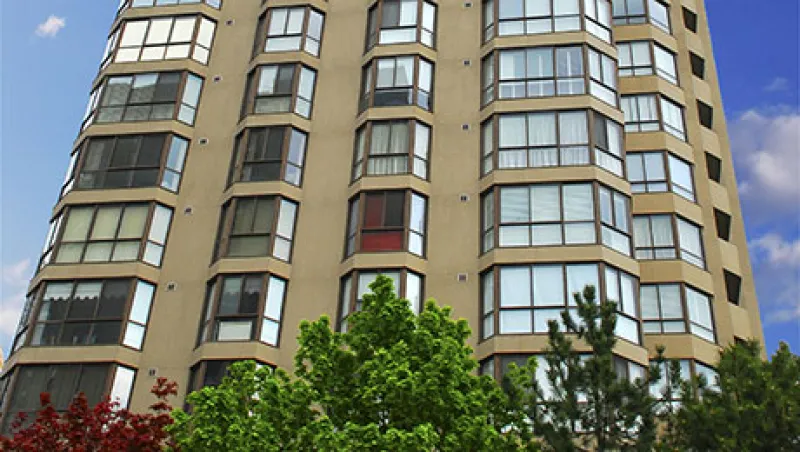America’s population is aging fast. People over the age of 65 made up nearly 13 percent of the U.S. population in 2009, the latest date for which federal data are available, and the Department of Health and Human Services predicts that by 2030 seniors will make up 19 percent of the country’s population. As longevity continues to increase, seniors represent both a growing demographic and market, particularly for real estate. As people age, the demand on hospitals, health care products and services and, most important, senior living facilities grows exponentially and, with it, opportunities for investors.
Deals for medical office buildings, for instance, are skyrocketing, with more than $3 billion in sales of such properties taking place in the fourth quarter of 2014, the highest level since 2006, according to New York–headquartered real estate data firm Real Capital Analytics. But much of the current demand is for the development of senior living centers, which range from multifamily properties almost indistinguishable from the average apartment complex — apart from age requirements — to assisted-living facilities that employ skilled nursing staff. Investors of all kinds are becoming increasingly active in this asset class, thanks to improving metrics; commercial real estate brokerage firm Marcus & Millichap recently reported that occupancy, transaction volumes and returns on senior housing properties are all up for the first part of 2015.
This isn’t a surprise for Willy Walker, chairman and president at Bethesda, Maryland–based real estate financing firm Walker & Dunlop, which capitalized on the rush this month with the largest deal in its 77-year history. The deal included $670 million in loans to refinance a senior housing portfolio owned by New York–based real estate investment trust New Senior Investment Group, an affiliate of hedge fund firm Fortress Investment Group. The loans are adjustable-rate mortgages, securitized by government-sponsored enterprise (GSE) Freddie Mac, which is expected to provide a wealth of similar refinancing opportunities in the near future.
“If you look at the volumes Fannie and Freddie did in the first quarter, the multifamily market is exceedingly active,” says Walker, and that includes multifamily housing that caters to the growing senior citizen demographic. “There’s a good stock of existing senior housing that consistently needs to be refinanced ... [and] the demographics are driving a lot of new construction,” he says.
Walker & Dunlop has long worked with the GSEs, but even those without such a financial arrangement are finding a growing number of opportunities. With the new influx of demand, the senior living industry itself is changing.
“It has traditionally been somewhat of a fragmented industry,” says Scott Crowe, global portfolio manager of the Resource Real Estate Diversified Income Fund, which gives investors an institutional option for investing in real estate through a mixed portfolio of real estate equity, credit and globally traded real-estate-investment-trust equity. But investments from publicly traded REITs have produced significant consolidation in the senior living industry, thinning the herd of operators and leading to better management that is making both assets and operating companies more attractive than ever.
Thus far, much of the institutional investment in senior housing has been through loans for independent and assisted-living facilities, far more than for those that require staffing of skilled workers, such as nurses, and also involve a higher level of operational risk. But experts say that even nursing facilities are increasingly attractive because of their higher returns, especially when compared with traditional multifamily properties. To help with the learning curve, the National Investment Center for Seniors Housing & Care in Annapolis, Maryland, which collects data about senior housing, has been hosting “new investor” events around the country.
There are also significant real estate opportunities outside senior housing fueled by aging demographics both in the U.S. and abroad. The need for hospitals and other medical facilities is also growing in Asia, Africa, the U.K. and Australia, where South Africa–based real estate crowdfunding platform Wealth Migrate is attracting both individuals and institutional investors to a unique method of cross-border investing. Real estate crowdfunding is still in its infancy in much of the world, but as legislation is enacted and successful deals make headlines, more investors are willing to sign on, says Wealth Migrate CEO Scott Picken. Wealth Migrate recently closed a $12.7 million crowdfunded deal for a medical facility in Atlanta, and it’s working on building more than a dozen hospitals in Africa with crowdfunded money, a significant portion of which has come from institutional investors.
“It used to be impossible for institutional investors to find quality real estate deals on the ground in markets they didn’t know, but now they can track algorithms, just like stock traders, to be able to pinpoint deals quickly,” says Picken. “They have access to much more opportunity that’s not just in their own backyard.”
Though real estate crowdfunding has grown significantly in recent months — more than $1 billion in real estate funds was raised that way in 2014, and that number is expected to increase by more than 200 percent this year — much of the investment in senior housing and other health care properties is still fairly traditional. Whatever the method, experts note that although it’s a complicated market, technology and the transparency that comes with it have created a welcoming environment for institutional investors to take advantage of the growing demand.






